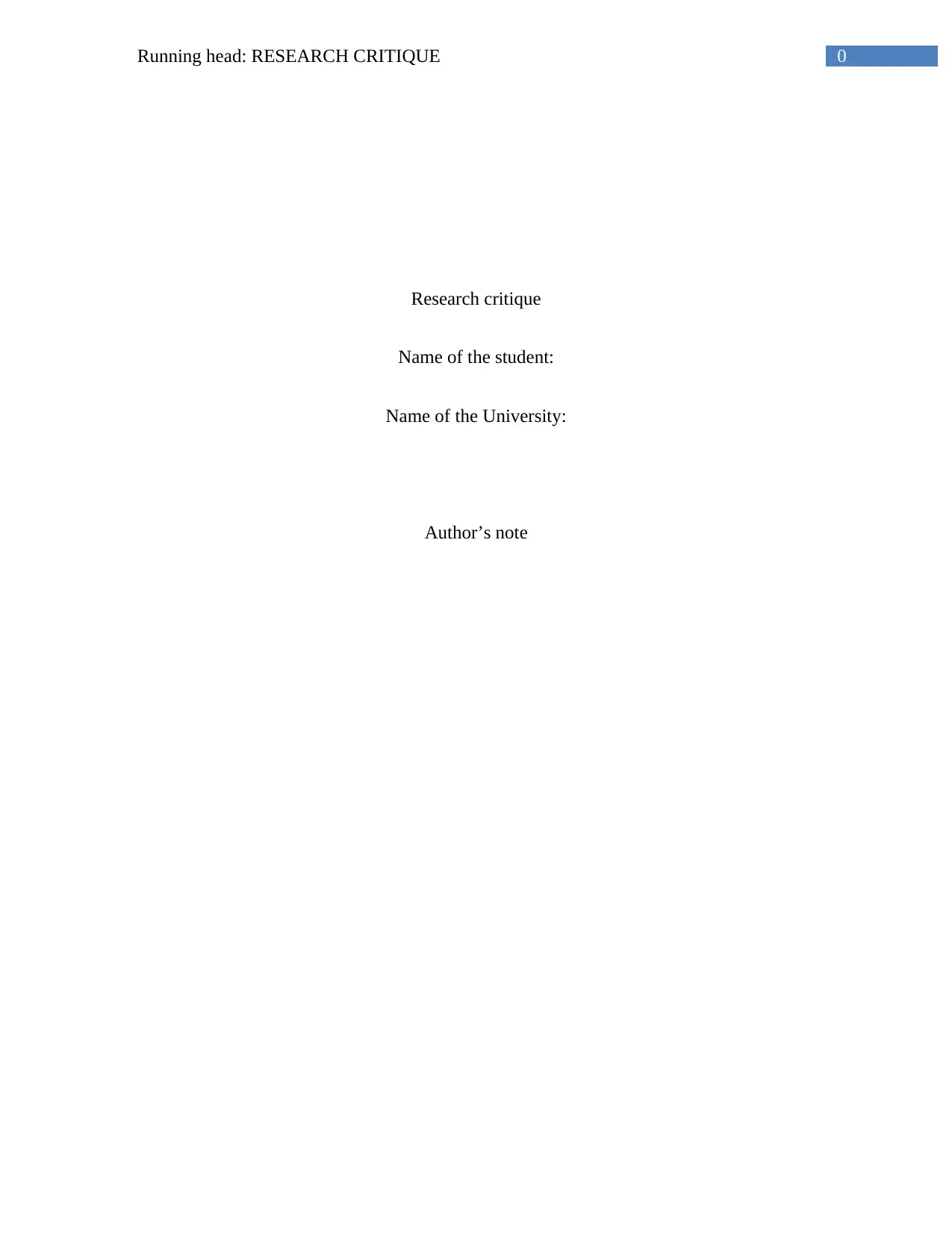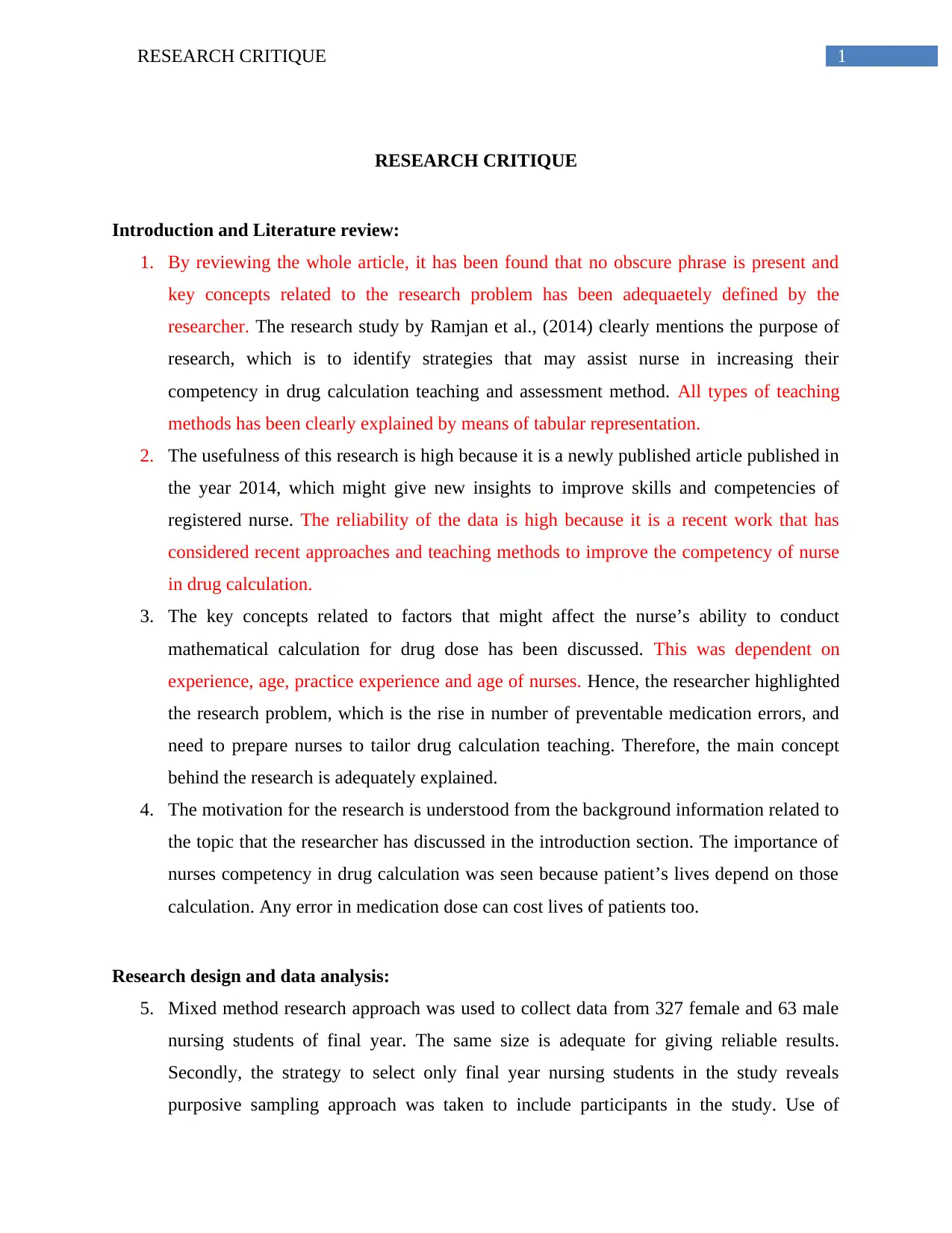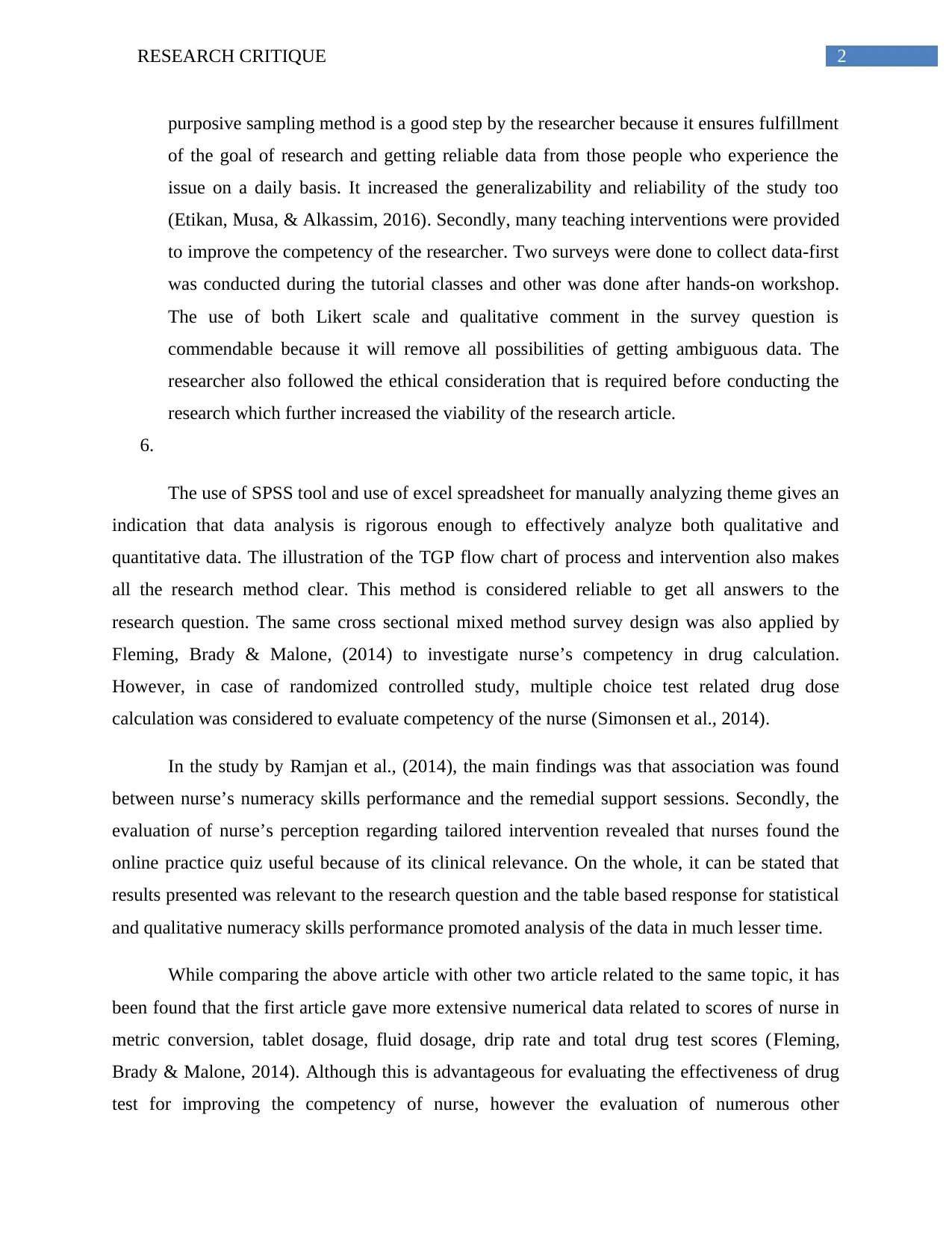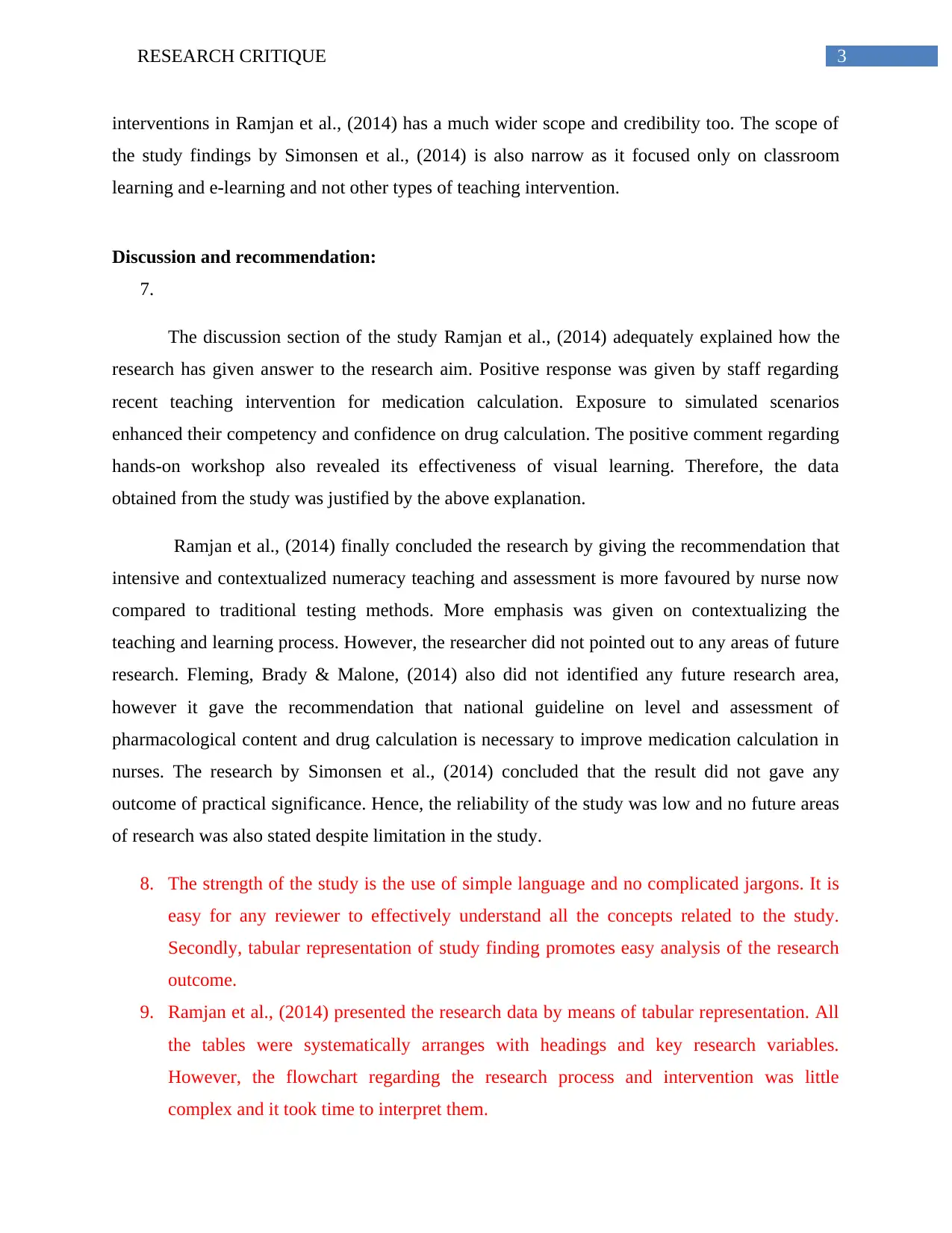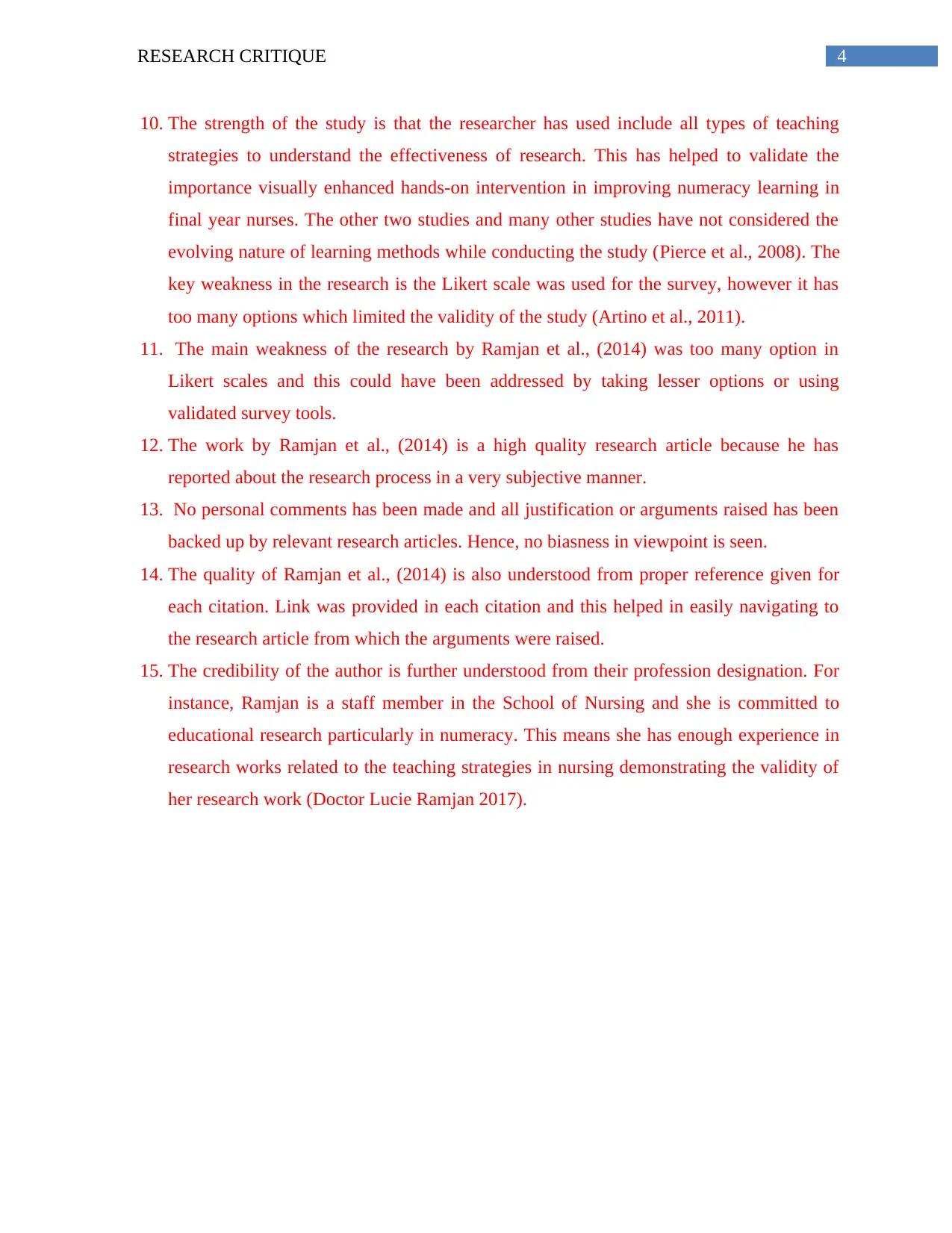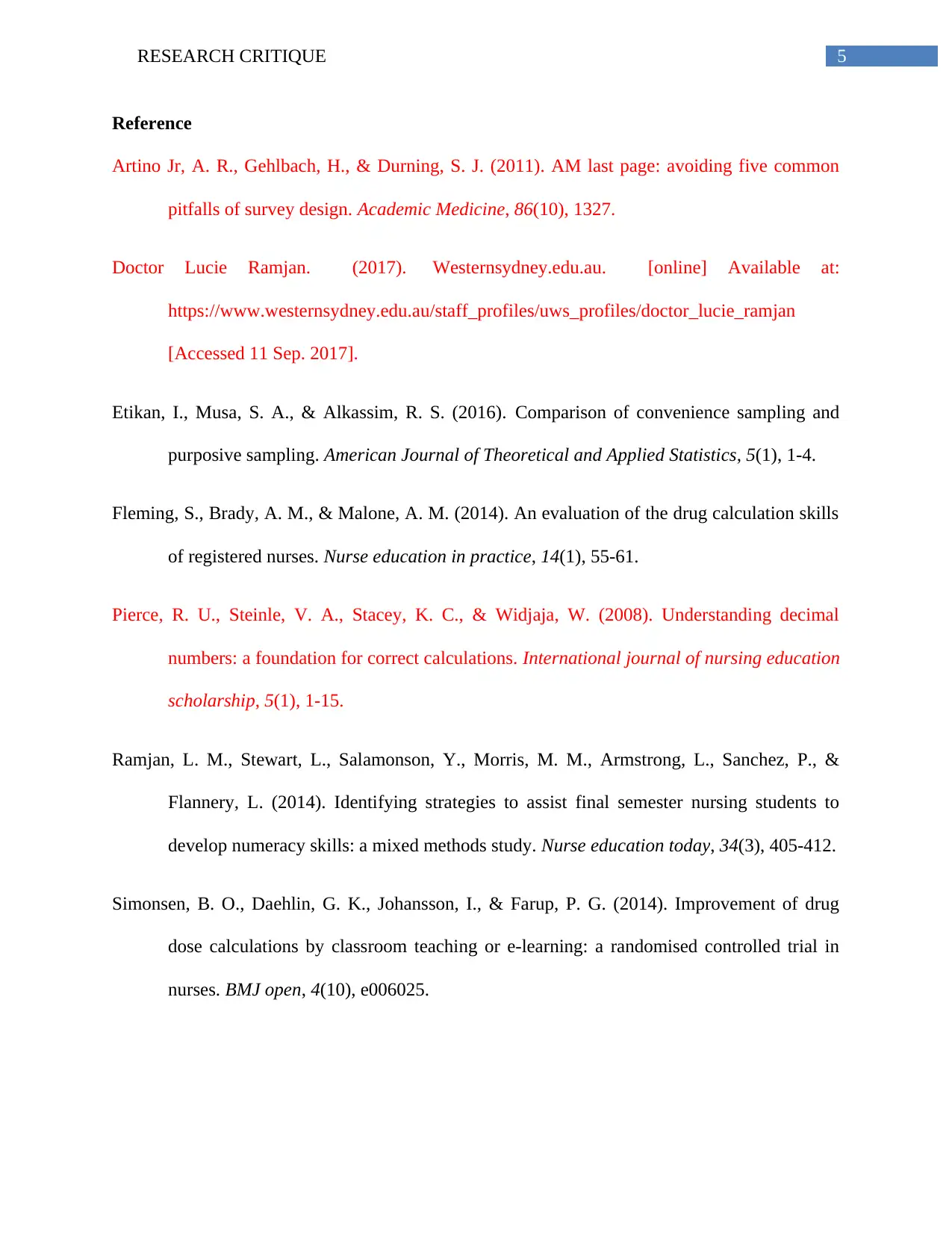The study conducted by Ramjan et al., (2014) aimed to investigate the effectiveness of teaching interventions for medication calculation among final year nursing students. The study found that hands-on workshops and simulated scenarios were effective in enhancing numeracy skills, while traditional testing methods were less favored. The research concluded that intensive and contextualized numeracy teaching and assessment is more suitable for nurses compared to traditional testing methods. The strength of the study lies in its use of simple language, tabular representation of findings, and inclusion of various teaching strategies. However, the study's limitations include the use of Likert scales with too many options, which may have affected the validity of the study.
![[object Object]](/_next/static/media/star-bottom.7253800d.svg)
![[object Object]](/_next/static/media/star-bottom.7253800d.svg)
